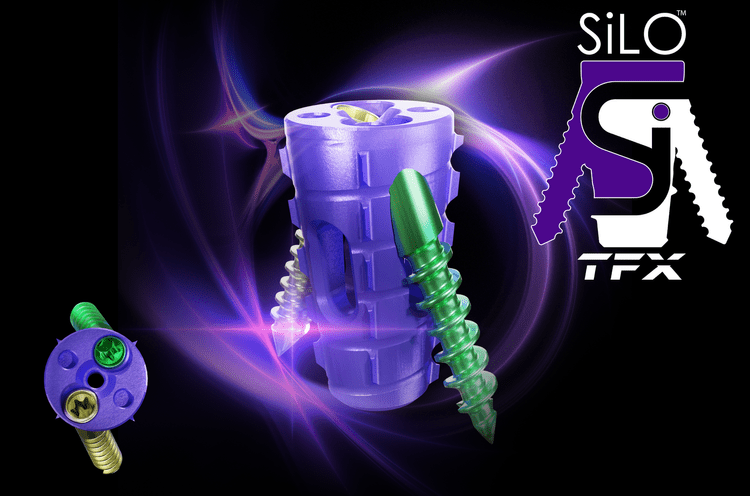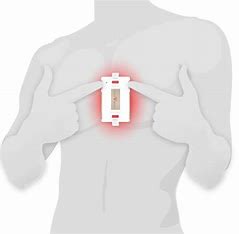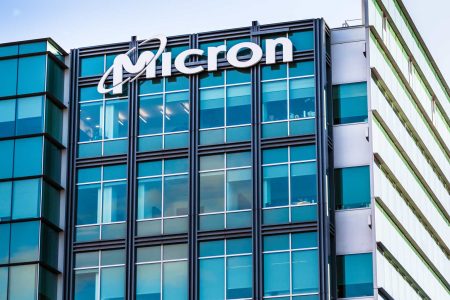Disruptive companies gain market share leadership by introducing a new product, technology, or marketing concept. McDonald’s (MCD) didn’t invent restaurants but disrupted the industry by introducing drive-up ordering in 1976. Ford (F) did not invent the automobile but disrupted manufacturing by introducing the assembly line in 1913.
Disruptive companies are growth stocks on steroids. These companies do not just grow market share but become the market share leader in their respective industry. Growth stocks, which are defined in Investopedia as
A growth stock is any share in a company that is anticipated to grow at a rate significantly above the average growth for the market.
There is an inverse relationship between interest rates and growth stock performance because growing companies tend to require financing for their growth. The market values these stocks at variables of expected future earnings. Higher interest rates result in lower earnings.
Interest rates have been on the rise, but that trend may have reached its peak. There are signals that rising rates have tamed inflation. A declining interest rate climate will provide a tailwind for a disruptive growth stock rally. Growth stocks thrive when interest rates are low, and as an additional catalyst, we are experiencing advances in technology at an unprecedented rate.
This article presents six early-stage publicly traded disruptive stocks with massive total addressable market opportunities ripe for riding the expected shift in interest rates.
Aurora Spine (OTCQB:ASAPF) (ASG.CA)
Aurora provides minimally invasive spine surgery products. Minimally invasive spine surgery is performed on an outpatient basis that lasts less than one hour, with the patient not needing a hospital stay or rehabilitation that results from invasive spine surgery. Aurora is leveraging the nascent market penetration of minimally invasive surgery into pain management centers as well as orthopedic surgeons.
The company had three potentially game-changing products gain FDA clearance in the past 12 months and is in the early stages of commercializing these products. Two products include Dexa technology, which the company did not invent but now owns the patent rights. Dexa is used to determine and match an individual patient’s bone density in order to create superior fixation. Aurora has the potential to be a disruptor in minimally invasive spine surgery but also has the potential to add high-margin revenue by licensing the Dexa technology for other implantable medical devices such as knee replacement and dental.
The TFX is a titanium device now being introduced for the fixation of the Sacroiliac joint and requires only one surgical screw and one incision. In contrast, competing devices require three screws and three incisions.
SILO TFX (AURORA SPINE WEBSITE)
I anticipate that Aurora will reach $20 million in revenue as well as profitability and increasingly develop into an acquisition candidate. Successful early commercial-stage medical device companies are prime acquisition targets for large medical device companies as it is cheaper to acquire innovation than to develop it.
Aurora Spine is a microcap stock with a market cap of about $15 million and, as such, is considered a higher when compared to a higher cap stock. The low cash level, last reported at about $1 million, is of particular concern. A cap raise would dilute future earnings. There was $1.5 million added to the cash position from warrant conversions, and $5 million in accounts receivable is expected to be reduced in the next report, which will beef up the cash position. I expect the company to turn profitable, but the cash position is important as they will need to fund kits for product rollout. Each kit, supplied to each customer to perform surgeries, costs about $10K. The company has an ample supply (40) kits for the commercial roll-out of DEXA-C, the first of its three new products, but will need funds for DEXA-L and TFX commercial rollout.
Nylon is in high demand due to its low cost and flexible properties. Nylon production has an environmental impact as it requires the use of petroleum Aquafil produces sustainable nylon named Econyl by recycling discarded fishing nets, clothing, mattresses, and carpets.
Aquafil is a disruptor by providing sustainable nylon while reducing landfill usage and the global carbon footprint. I could not find any other commercial company active in pursuing a similar business plan. Econyl has the same qualities and properties as nylon but does not require petroleum. The company is profitable and boasts customers like Burberry and Gucci.
Gucci Sustainable Fashion Magazine (Sustainable fashion trends for 2022)
The increased interest in sustainable environmental issues in the U.S. is a tailwind that Aquafil is hoping to catch. The stock was listed in the U.S. OTC market less than a year ago. The company’s sales are correlated somewhat with the price of oil. As oil prices rise, there is an increased demand for synthetic nylon.
Arqit Quantum (ARQQ)
Quantum computing offers the ability to process information at much higher rates, including penetrating encryption security as we know it. Arqit offers cybersecurity protection that isn’t solvable as new security keys are created for each use. The security keys are created at end-points eliminating the possibility of interception. Arqit’s software is available for all types of systems as it is lightweight in that it requires less than 200 lines of coding.
HARVEST NOW, DEPLOY LATER (CDW WEBSITE)
Arqit has a boatload of competition, but it seems to be leading the pack judging from its customer list, which includes some of the world’s largest encryption companies: Amazon (AMZN), Dell (DELL), and Fortinet (FTNT). Dell has packaged the Arqit software for the U.S. government’s defense against “harvest now, deploy later” attacks. Arqit has similar contracts with other governments, including Australia and Great Britain.
The stock recently sold off on the news of a capital raise, creating a lower entry price opportunity. It is very early in the quantum computing industry, and difficult to forecast if Arqit will need additional funding. Management guidance had called for profitability by this juncture which hasn’t materialized. The stock price has declined about 90% over the past 52-week period. A change in the interest rate environment is likely to shift the focus on future earnings potential outweighing dilution.
Else Nutrition (OTCQX:BABYF) (BABY.CA)
Else offers a line of plant-based food. Not all plant-based food is necessarily healthy, depending on what ingredients are included. Else products are organic and made from three main ingredients; tapioca, buckwheat, and almonds. The company aims to fill a void by providing a nutritional alternative to dairy products that is not soy-based. Else claims that its products fill nutritional requirements and has provided evidence to back its claims.
I learned from a pediatrician friend that very few hours of dietary training are provided in this field. Yet, parents will logically consult with pediatricians in making dietary decisions for their children. The company has conducted clinical trials to back its nutritional value claims and is actively involved in pediatrician education programs to promote its products.
Else began commercial sales online in the U.S. in late 2020. This is a big year for the company as it expects to have sales in over 20,000 stores in the U.S. as it expands internationally into Canada, Europe, and China. The company has also expanded its product offerings, including the world’s first cereal to be certified free of heavy metals, and tripled its production capacity.
ELSE SUPER CEREAL (WAL-MART ONLINE SALES WEBSITE)
The company has undergone capital raises annually since 2020 to fund its expansion and clinical trials, which includes laying the groundwork for what is expected to be the company’s flagship product, the world’s first organic, non-soy, plant-based, nutritional equivalent to mother’s milk.
Since commercial activity began, sales have grown at a high double-digit rate each year. Still, this year’s expansion of new products, new territories, and increased production capacity should escalate the growth rate.
Else Nutrition has a market cap of $64 million and is considered a higher risk than higher market cap stocks. Not all plant-based food is a healthier alternative. Else is marketed as a healthy alternative and needs to distinguish itself from a growing field of competitors who may offer lower pricing but lower quality. The real test for Else and what will ultimately decide its success will be clearing FDA approval for its infant formula.
The recent financing for the new production facilities was noteworthy as it is an investment in the company. The terms include lock-up periods and conversion tied to the market stock price at the time of conversion.
Eve Holding (EVEX)
Eve is an eVTOL company. eVTOL are electrically powered vertical take-off and landing aircraft that will transport people and cargo in the near future. The attractiveness of eVTOLs is the massive opportunity projected to be worth billions. This is a nascent market with many entrants seeking market share. Eve has a competitive advantage and has established early leadership.
EVE HOLDING eVTOL (ELECTRIC WHIP WEBSITE)
Embraer (ERJ) owns about 80% of EVEX and will provide all the maintenance services for EVEX aircraft. The company plans to introduce its prototype later this year and begin testing for commercial use early next year. According to the investor presentation, the company already has a backlog exceeding $8 million. The company has sufficient funding to meet its operational needs for the next three years and zero debt. With no dilutive capital raises expected, the stock is in a good position to appreciate in price as the company continues to develop its future commercial rollout.
HeartBeam (BEAT)
We know that early treatment of a heart attack will reduce the degree of harm, so we rush to the hospital if we are experiencing chest pains. Many conditions, such as stress and heartburn, create similar symptoms as a heart attack and result in a false alarm. Emergency rooms are typically equipped with 12-lead Electrocardiography (“ECG”) devices which aren’t very accurate and result in a lengthy evaluation process.
HEARTBEAM AMIIGO (HEARTBEAM WEBSITE)
HeartBeam didn’t invent the gold standard of heart attack detection, Vector Electrocardiography (“VECG”), but offers proprietary software for using VECG to detect multiple heart conditions in a credit card size mobile device called HeartBeam AIMI. FDA clearance is pending for a remote health application of the same HeartBeam AIMI technology for a prescription device worn by a patient and monitored by the prescribing physician. The company has a recurring revenue model for both devices and has the potential to disrupt the heart attack detection market.
HeartBeam last reported about $3.5 million in cash and a burn rate of about $2.5 million per quarter. The need for a capital raise is evident, but the company has a tiny market cap of $19 million with just around 8 million shares outstanding. The stock price has moved sideways over the last 52 weeks. A lower interest environment will focus investor attention on HeartBeam penetrating its market.
Conclusion
Stocks of companies that do not generate profits have been out of favor during this period of rising interest rates. Inflation will eventually be tamed, and we may be near that point. Investors will see a change in the interest rate trend as a fresh opportunity in growth stocks, such as the six disruptor stocks discussed in this article.
Editor’s Note: This article discusses one or more securities that do not trade on a major U.S. exchange. Please be aware of the risks associated with these stocks.
Read the full article here















